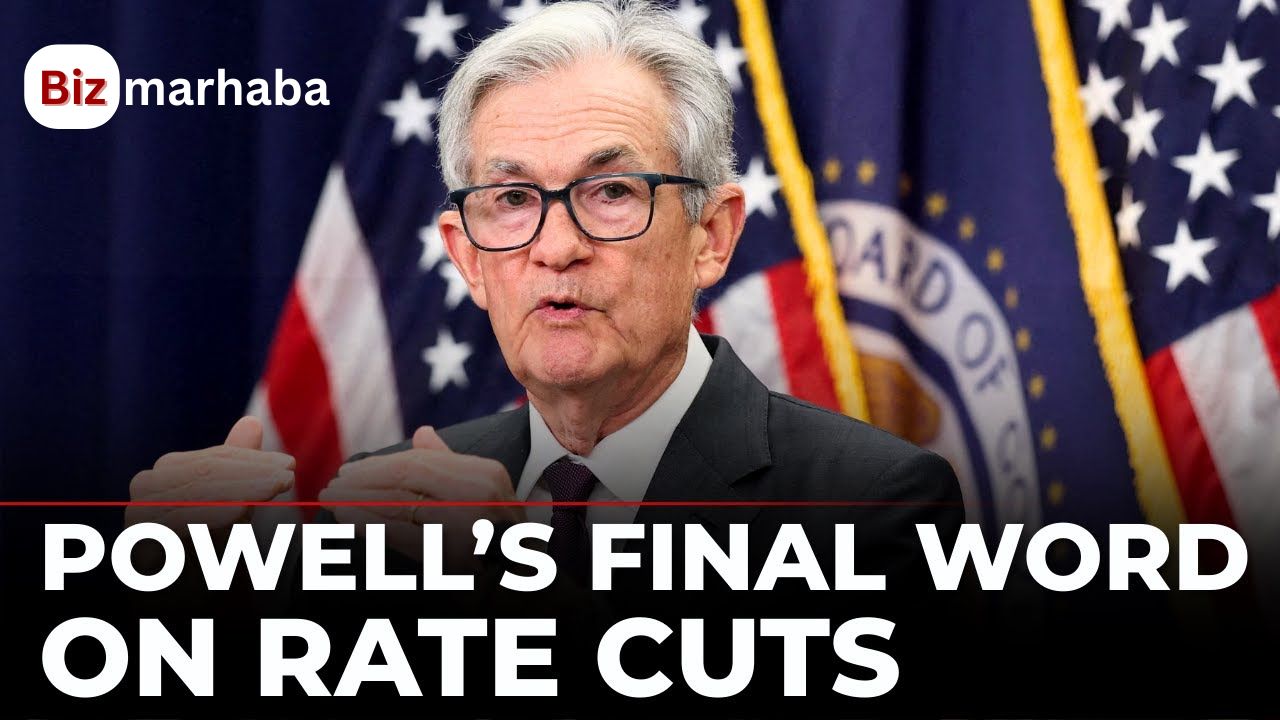- Familiarizing yourself with the Fed’s Annual Jackson Hole Meeting
- Key Points from Powell’s 2025 Speech
- What is a Fed Rate Cut?
- Why the Federal is Considering Rate Cuts Now
- Impact of Tariffs and Inflation Risks
- Effects of a Fed Rate Cut on Businesses
- How Rate Cuts Impact Consumers
- Stock Market and Investor Reactions
- Global Implications of U.S. Interest Rate Cuts
- Hazards of Cutting Rates Too Early
- Lessons from Past Fed Rate Cuts
- What Experts Are Saying
- Last Thoughts on Powell’s Address
The financial community was fixated on Jackson Hole, Wyoming, on Friday as Federal Reserve Chairman Jerome Powell gave his highly anticipated annual speech. Powell hinted that the U.S. central bank might reduce interest rates in September, potentially marking a change in economic policy. With policy in tight territory, the baseline outlook and the evolving balance of risks may call for a policy adjustment,” Powell said. His remarks immediately sparked speculation on a Fed rate cut and how it might reshape the economy.
Familiarizing yourself with the Fed’s Annual Jackson Hole Meeting
Each year, economists, politicians, and world financial leaders meet in Jackson Hole to talk about pressing monetary policy issues. It’s where the Fed often telegraphs significant policy changes. Previous speeches have paved the way for landmark decisions—making Powell’s recent remarks that much more critical.
Key Points from Powell’s 2025 Speech
Powell’s speech addressed three significant topics:
- Rate Cuts: A robust signal of a possible interest rate reduction in September.
- Inflation Stability: In spite of tariff jitters, inflation expectations are stable.
- Tariff Pressures: Recognition that tariffs do represent potential risks, but markets are still convinced of stability around the Fed’s 2% target.
The response? Investors let out a collective sigh, with Wall Street cheering at the prospect of easier credit terms.
What is a Fed Rate Cut?
In simple terms, a rate cut is when the Federal Reserve reduces the price of borrowing money. The Fed controls the federal funds rate, which banks borrow and lend to one another. This rate has a knock-on effect on mortgages, credit card interest, business loans, and even savings accounts.
Imagine it this way: when the Fed drops rates, it’s like reducing the price tag on borrowing cash—getting businesses and consumers to spend and invest more.
Why the Federal is Considering Rate Cuts Now
So why now? Powell cited a “restrictive” policy stance—ie, rates are above where the economy might require them. With cooling signs of inflation and a reduction of risks, the Fed believes there is scope to ease without harming stability.
Moreover, global uncertainty, trade tensions, and easing growth have compelled central banks globally to reconsider their approach.
Impact of Tariffs and Inflation Risks
Tariffs are a sneaky form of taxes that drive prices up. Although they may induce short-term inflation, Powell reiterating that long-term expectations are still sound. Market surveys say that inflation continues to be in line with the Fed’s 2% target—a sweet spot for long-term growth.
Effects of a Fed Rate Cut on Businesses
For companies, a rate cut is equivalent to lower-cost fuel for their engines. Lowered borrowing costs translate into easier financing of expansion, hiring, and research and development. Small and medium businesses, especially, welcome the lower loan costs.
When money gets cheaper, risk-taking and investment tend to rise—fueling more economic activity overall.
How Rate Cuts Impact Consumers
Consumers notice the impact of rate cuts in their pockets:
- Mortgages are less expensive, revving up the housing industry.
- Credit card rates fall, relaxing monthly bills.
- Car loans and personal loans experience reduced interest, stimulating high-ticket purchases.
In a nutshell, a reduction in interest rate means greater room to breathe for households already strained by inflation.
Stock Market and Investor Reactions
Wall Street is enamored of cheap money. Throughout history, rate reductions have triggered rallies when investors expect more robust business expansion and consumer spending. But markets also become unsettled if they perceive reductions as symptomatic of underlying economic ills.
Global Implications of U.S. Interest Rate Cuts
When the U.S. lowers rates, it tends to cause shockwaves around the world. The U.S. currency can weaken, benefiting exporters but hurting importers. Emerging markets can experience a change in capital flows, and conditions for international borrowing can turn overnight.
Hazards of Cutting Rates Too Early
Although a Fed rate reduction provides numerous advantages, it is not without risk. It might do the following if done too early:
- Trigger inflation again.
- Trigger financial bubbles in stocks or housing.
- Undercut confidence in the Fed’s inflation-fighting credentials.
- The Fed needs to tread a delicate line—boosting growth without igniting volatility.
Lessons from Past Fed Rate Cuts
History has demonstrated that rate cuts are great medicine:
- 2008 Financial Crisis: Deep rate cuts softened a falling economy.
- 2020 Pandemic: Quick rate cuts assisted enterprises and consumers in riding out lockdowns.
Current circumstances are different—no financial meltdown, but a tactical adjustment to stay with the pace without upsetting inflation.
What Experts Are Saying
Economists are still in disagreement:
- Some think that a September reduction is needed to prevent slowing growth.
- Others caution that early easing will boomerang if inflation rises again.
- The business community generally supports lower-cost credit, expecting it to trigger investment.
- What to Watch at the September Fed Meeting
- Everyone is looking ahead to the next Fed meeting. Possibilities include:
- A quarter-point cut in the rate, as a tentative beginning.
- Staying put, and waiting for additional data.
- Telegraphing possible future cuts, should conditions deteriorate.
- Markets will be listening closely to Powell’s words and the Fed’s economic forecasts for signals.
Last Thoughts on Powell’s Address
Jerome Powell’s Jackson Hole speech set the stage for a key decision in September. By implying a potential interest rate reduction, the Fed indicated a willingness to adjust to shifting risks. For consumers, corporations, and investors alike, the next few weeks will determine financial planning throughout the board.








